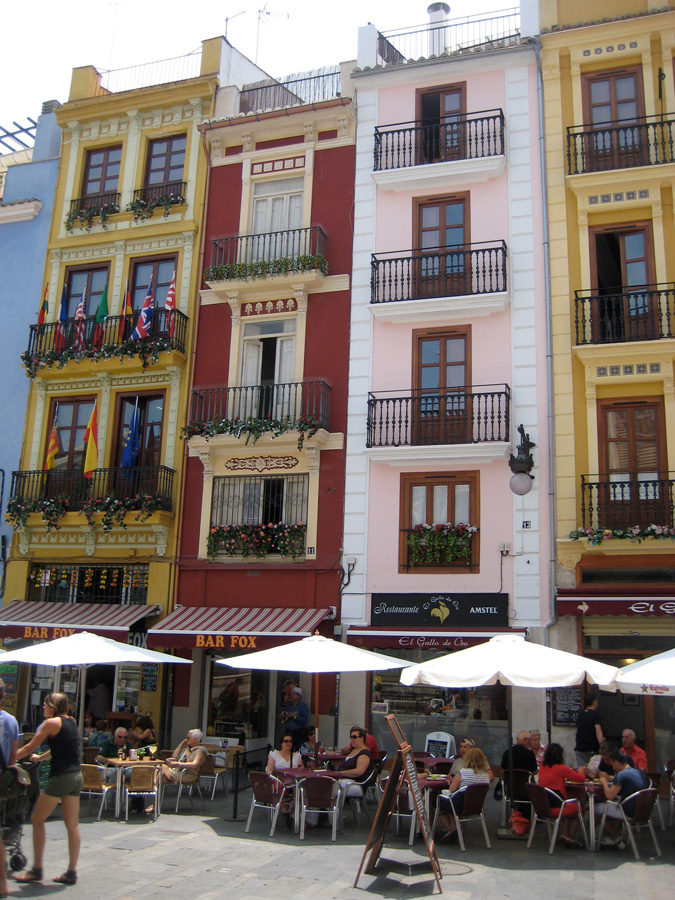You’ve probably heard of tapas —small dishes that are meant to be shared, usually standing at the counter in a bar or café while drinking a caña (a small draft beer), or a glass of wine. But the meaning of the term tapa, as understood outside of Spain, doesn’t convey the whole essence of the ritual that ir de tapas, ir de tapeo, cenar de tapas, is. Barhopping is the word that I can most closely translate it to. An experience in itself, ir de tapas is what I call a Spanish idiosyncrasy, a way of eating, a ritual that is part of Spaniards’ way of life.




In fact, Spaniards don’t usually eat tapas at home. It is commonplace to have a first round of tapas in one bar and then move on to the next one, usually located only steps away. Depending on the time of day, this can be considered dinner, or just an appetizer if before a meal. Tapas, or rather, tapas dishes, are becoming popular in the United States. But what I see served as tapas here are small portions of larger dishes, or of the main entrée. In Spain, tapas are meant as tapas, with no other pretensions. You usually wouldn’t eat a tapa like, say, patatas bravas (fiery potatoes) as a main dish, but just as a tapa, to share at the table, alongside a variety of other tapas dishes. Of course, there are sometimes exceptions to the rule (tortilla de patata, Spanish omelet, comes to mind).





While tapas is the most internationally known name for the smaller dishes that are meant to be shared by friends amidst lively conversation, tapas have different names in other parts of Spain. Montaditos, cazuelitas, raciones, or pinchos, are the names by which they’re known in different parts of the country. They can also refer to a specific kind of tapa. Pinchos, for instance, is the name given to tapas in the northern regions of Spain. Montaditos, are a kind of tapa usually mounted over a small round of baguette. The ingredients on top of the bread can be cold, hot, or a combination of the two, and can include different kinds of cheese, anchovies, sardines, piquillo peppers, or grilled tuna or sauté pork. The ingredients can be piled quite high, and to avoid them toppling down, they’re usually held together by a toothpick—the count of toothpicks left on the plate gives the waiter the number of pinchos you had, and you will be billed accordingly. Cazuelitas are tapas that are prepared and served in a small earthenware (clay) dish.



Bodega La Montaña, Valencia



Iberian ham croquettes, broken eggs with chorizo, baby faba beans with octopus, goat cheese with caramelized onions paté, at La Sepia Boba in Peñíscola
Each region of Spain, and even each bar, have their own specialties, but some tapas are national staples, like tortilla española (Spanish omelet), gambas al ajillo (sizzling garlic shrimp), patatas bravas, (fiery potatoes) or platters of sliced jamón ibérico or chorizo, or queso manchego, manchego cheese. However, for years now, Spanish cuisine has been evolving into a cutting edge one, where the kinds of tapas created by top chefs are only limited by their own imagination.
Check out the RECIPES folder in Mama Ía for some tapas recipes —I promise you won’t be disappointed!

Bar Jauja, Onteniente


October 20, 2015 @ 6:29 pm
You have done the right description of TAPAS.
In Spain, is so important
THE PEOPLE, the ones who share a good time with you (friends, relatives, work colegues, …. or simply on your own).
THE MOMENT, sunny saturday morning in summer, rainy friday night in winter, …. no matter the weather but always relaxed and happy.
THE PLACE, “excellent” samples named in this blog.
and of course…..
THE RECIPES, you can look for ideas here!!!!
CONGRATULATIONS
October 21, 2015 @ 12:29 am
Thank you, Jaime! I guess you have had tapas in Spain before…
Natacha XX